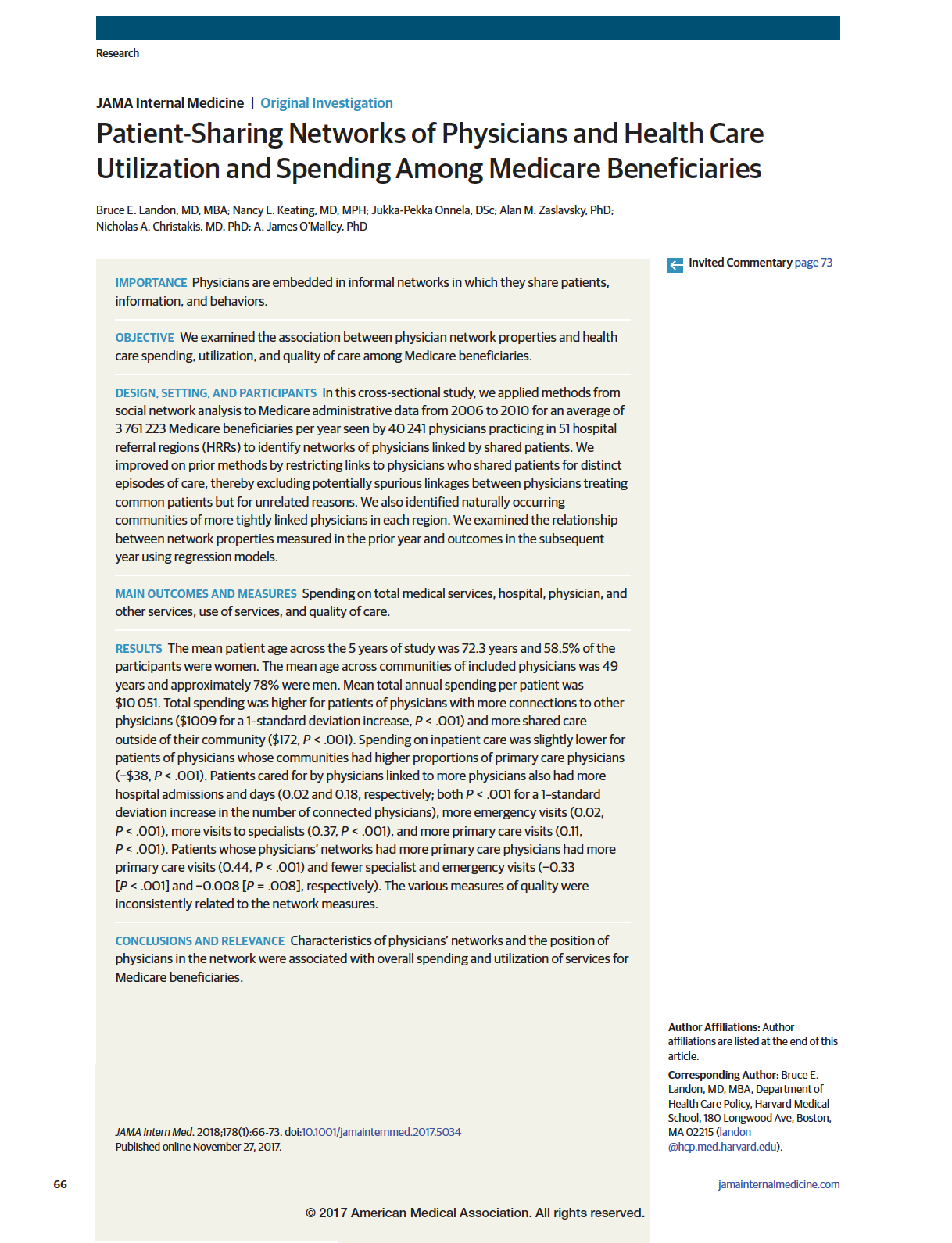
Patient-Sharing Networks of Physicians and Healthcare Utilization and Spending Among Medicare Beneficiaries
Abstract
Importance Physicians are embedded in informal networks in which they share patients, information, and behaviors.
Objective We examined the association between physician network properties and health care spending, utilization, and quality of care among Medicare beneficiaries.
Design, Setting, and Participants In this cross-sectional study, we applied methods from social network analysis to Medicare administrative data from 2006 to 2010 for an average of 3 761 223 Medicare beneficiaries per year seen by 40 241 physicians practicing in 51 hospital referral regions (HRRs) to identify networks of physicians linked by shared patients. We improved on prior methods by restricting links to physicians who shared patients for distinct episodes of care, thereby excluding potentially spurious linkages between physicians treating common patients but for unrelated reasons. We also identified naturally occurring communities of more tightly linked physicians in each region. We examined the relationship between network properties measured in the prior year and outcomes in the subsequent year using regression models.
Main Outcomes and Measures Spending on total medical services, hospital, physician, and other services, use of services, and quality of care.
Results The mean patient age across the 5 years of study was 72.3 years and 58.5% of the participants were women. The mean age across communities of included physicians was 49 years and approximately 78% were men. Mean total annual spending per patient was $10 051. Total spending was higher for patients of physicians with more connections to other physicians ($1009 for a 1–standard deviation increase, P < .001) and more shared care outside of their community ($172, P < .001). Spending on inpatient care was slightly lower for patients of physicians whose communities had higher proportions of primary care physicians (−$38, P < .001). Patients cared for by physicians linked to more physicians also had more hospital admissions and days (0.02 and 0.18, respectively; both P < .001 for a 1–standard deviation increase in the number of connected physicians), more emergency visits (0.02, P < .001), more visits to specialists (0.37, P < .001), and more primary care visits (0.11, P < .001). Patients whose physicians’ networks had more primary care physicians had more primary care visits (0.44, P < .001) and fewer specialist and emergency visits (−0.33 [P < .001] and −0.008 [P = .008], respectively). The various measures of quality were inconsistently related to the network measures.
Conclusions and Relevance Characteristics of physicians’ networks and the position of physicians in the network were associated with overall spending and utilization of services for Medicare beneficiaries.
Citation:
B. E. Landon, N. L. Keating, J. Onnela, A. M. Zaslavsky, N. A. Christakis, and A.J. O'Malley, “Patient-Sharing Networks of Physicians and Healthcare Utilization and Spending Among Medicare Beneficiaries,” JAMA Internal Medicine, 178: 66-73 (Jan 2018) DOI: 10.1001/jamainternmed.2017.5034